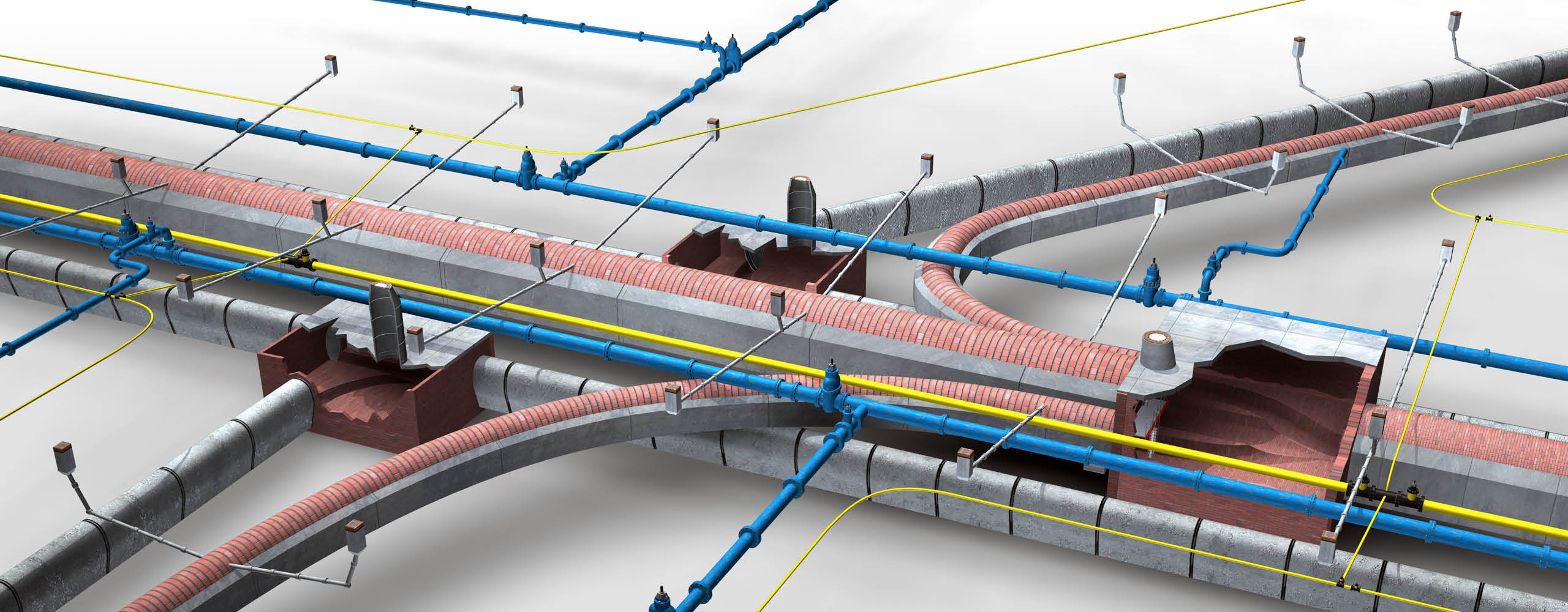
STATUS Decision optimization for municipal infrastructure
The basis of our strategy analysis, development and optimization is our Lifecycle Asset Management Model STATUS, which has been continuously developed since 2003 and has already been used successfully for approximately 35,000 km of sewer and water networks. It contains the components: data analysis, stochastic aging model, strategy model and a monitoring system. In interaction with these 4 components, asset life cycles can be transparently controlled and optimized.
Data Analysis
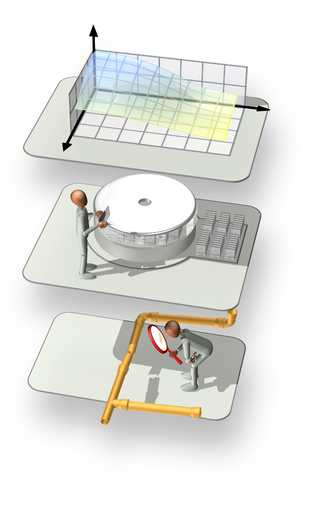
The databases of water supply and wastewater disposal systems have grown historically and are subject to operational, technical and software-related (regulatory) adjustments, however, it cannot be assumed that the data is consistent. For Lifecycle Asset Management and its monitoring, this data from the various systems must be merged. The data analysis component of STATUS checks the data for:
- completeness,
- compatibility,
- accuracy,
- data consistency,
- plausibility,
- actuality,
and corrects them if necessary after consultation with the customer.
Aging model
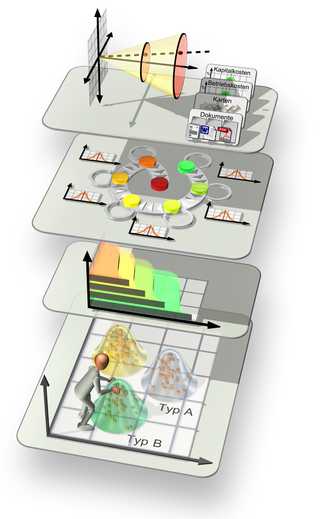
The aging behavior of water supply and wastewater disposal systems is defined in the differentiated aging model of STATUS with cluster-specific survival functions, each separately according to condition (urgency) and fabric deterioration (rehabilitation effort). The change of these two groups of key figures (four individual variables each for structural stability, operational safety, tightness and overall behaviour) describes the change of the object over time.
Strategy Model
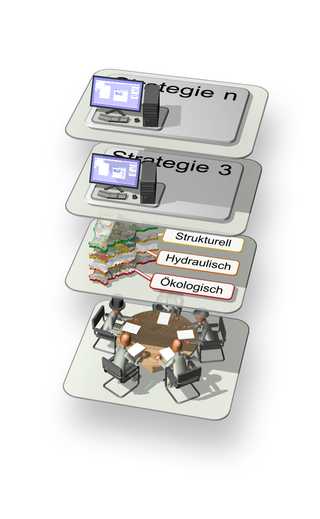
Based on the network aging and the rehabilitation and maintenance decisions of the network operator, STATUS forecasts the change in condition and fabric deterioration at the object level for the present (present forecast) and the future. This information serves to optimize a future-oriented, integral investment, rehabilitation and maintenance concept. In this respect the term “Integral” is understood to mean a long-term oriented approach to solving a variety of structural, hydraulic, operational and environmental problems with similar high priority, taking into account legal and economic constraints.
Monitoring System

The monitoring component, called STATUS Cockpit, enables the implementation of a continuous planning approach based on the strategy results by determining the deviations between the optimized and the actual project performance. STATUS Cockpit takes into account the principles of integral planning and enables team-based, cooperative project management, which enables an early involvement of economic and political decision-makers in the further planning process with regard to goal setting and decision-making processes. With STATUS Cockpit, a continuous goal and requirement orientation are achieved, taking into account the entire life cycle of the infrastructure network.
STATUS is Germany’s leading asset management approach for municipal water and wastewater infrastructure systems which is highly aligned with the international standard ISO 55000 "Asset Management in an Organization".
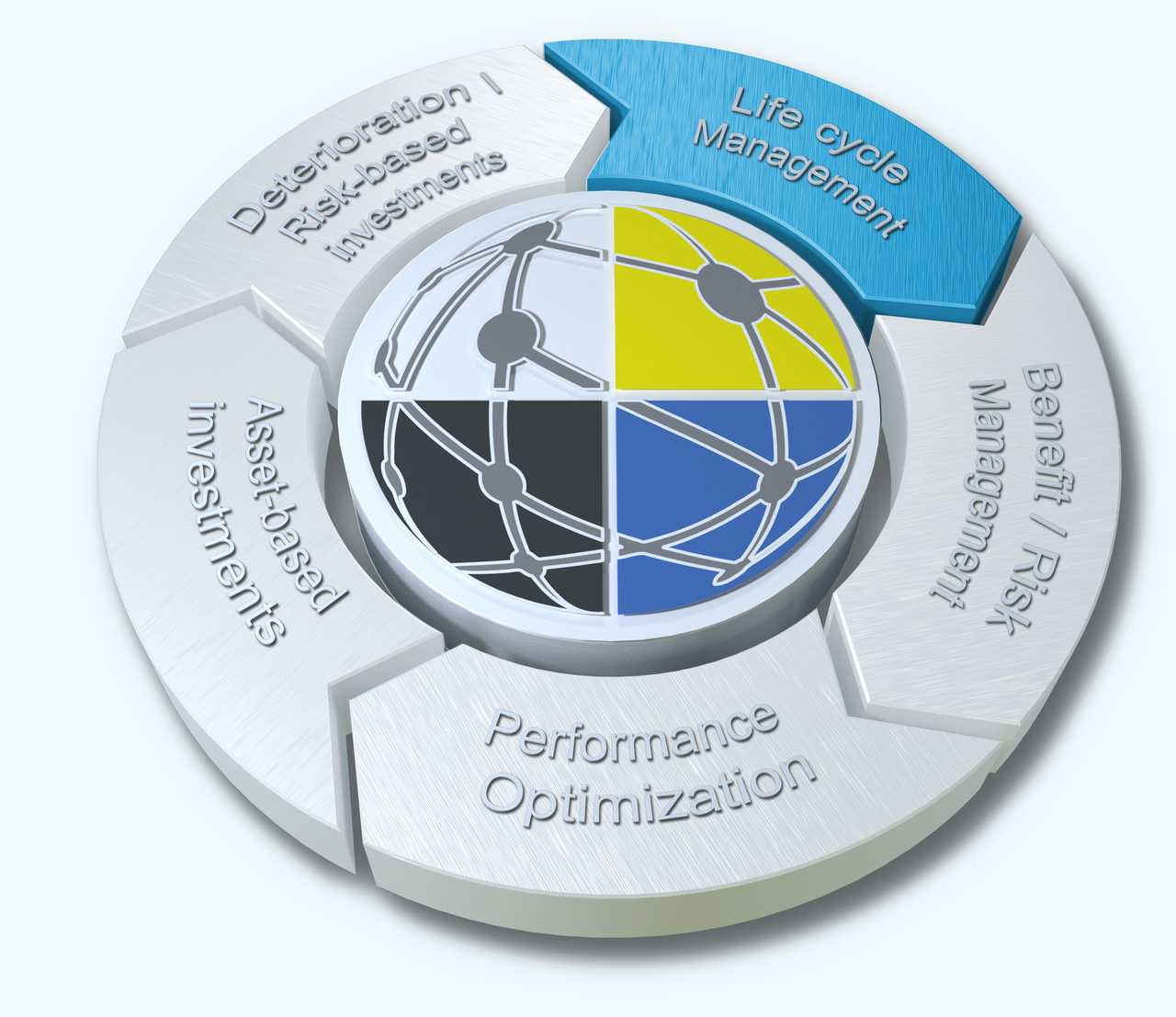
|
Life Cycle Management |
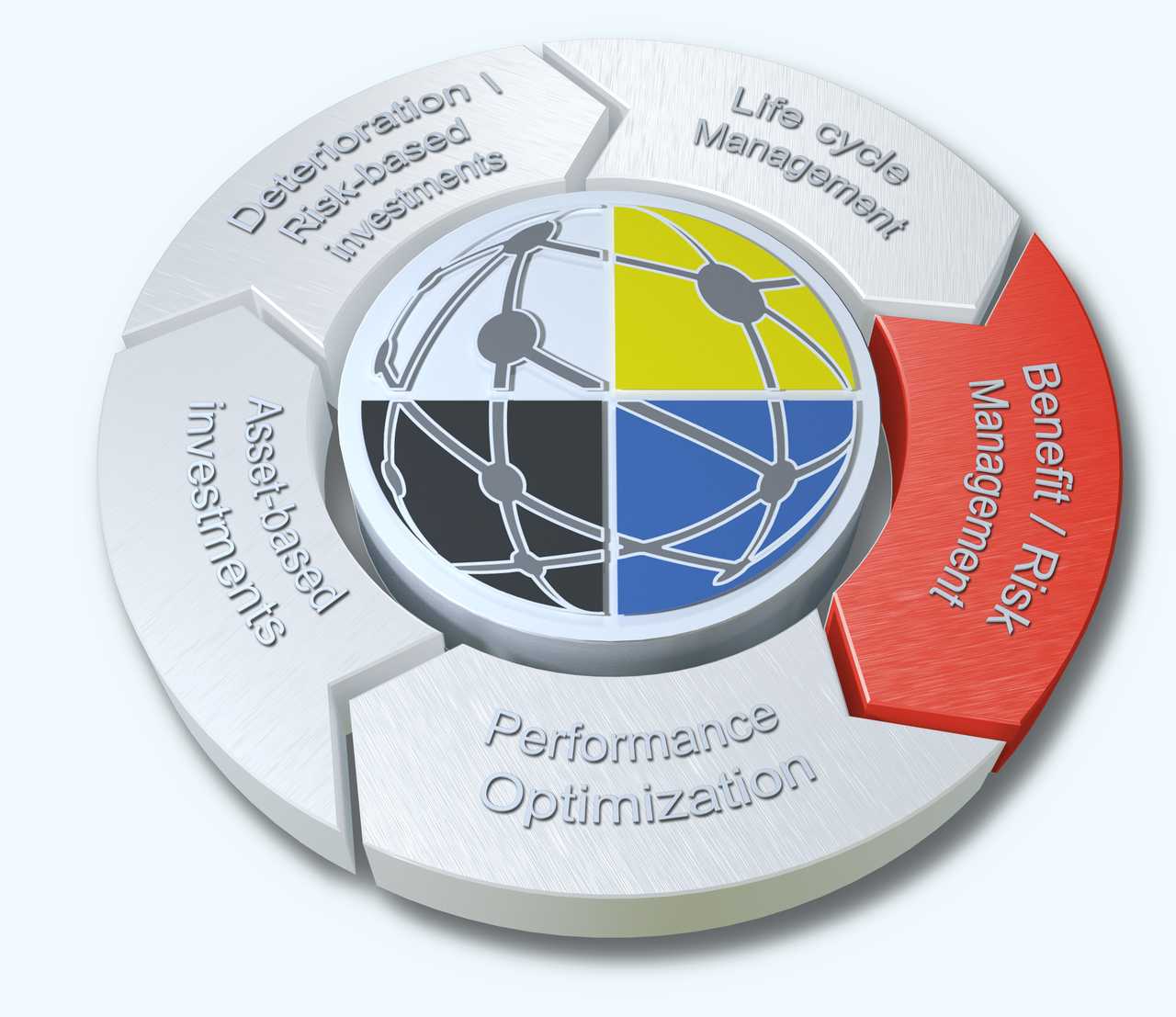
|
Benefit / Risk Management |
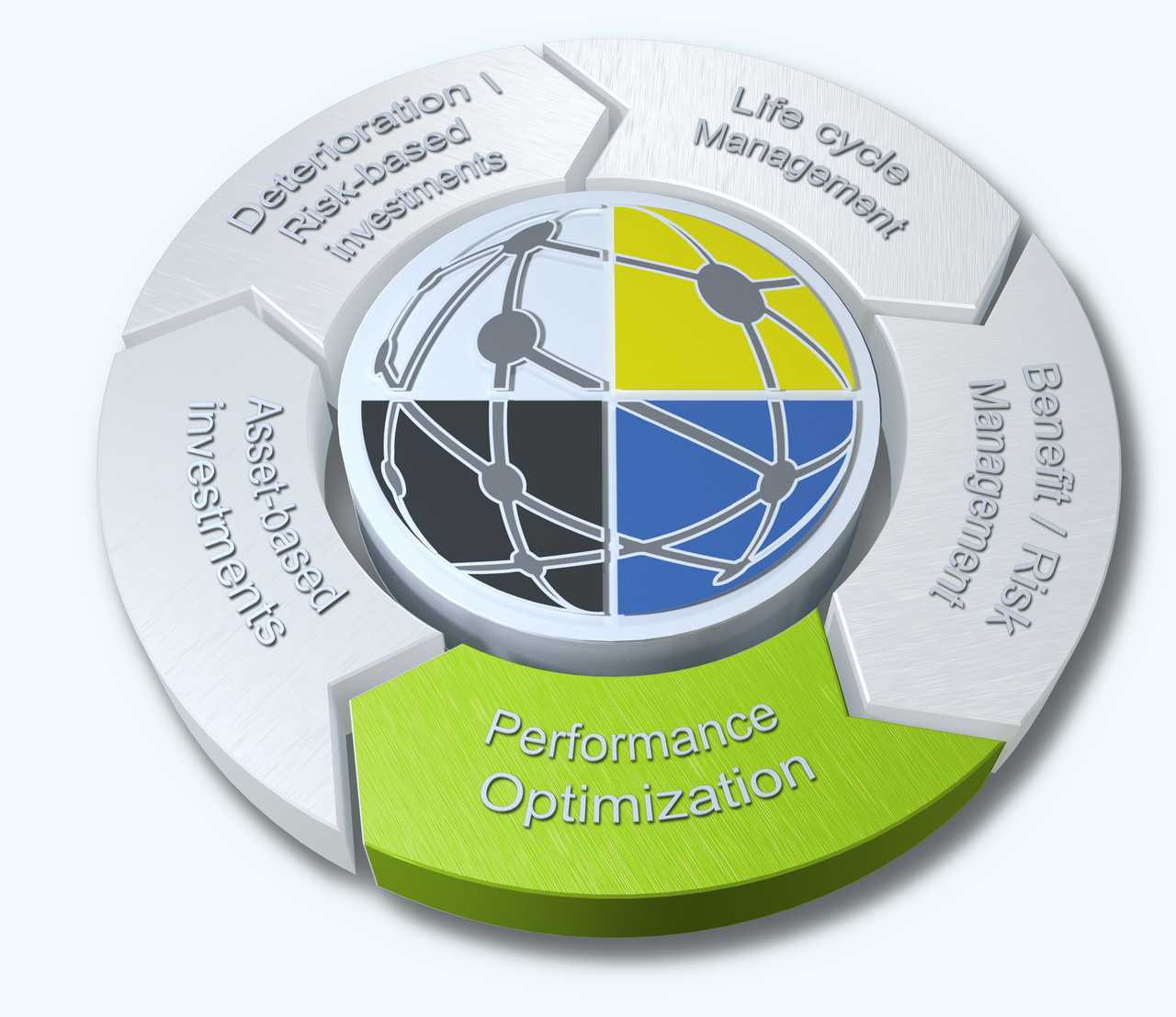
|
Performance Optimization |
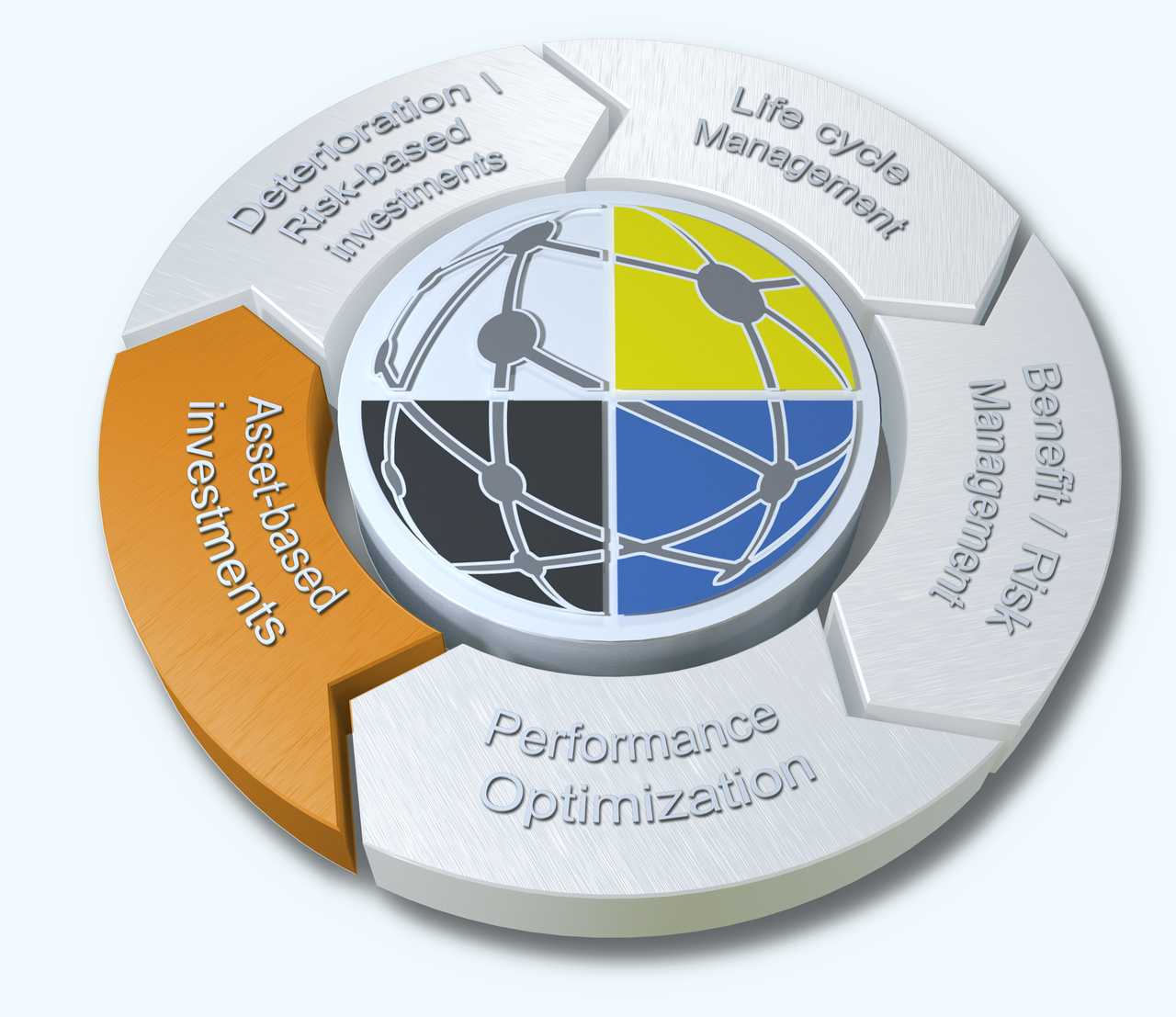
|
Optimization of asset-based investments |
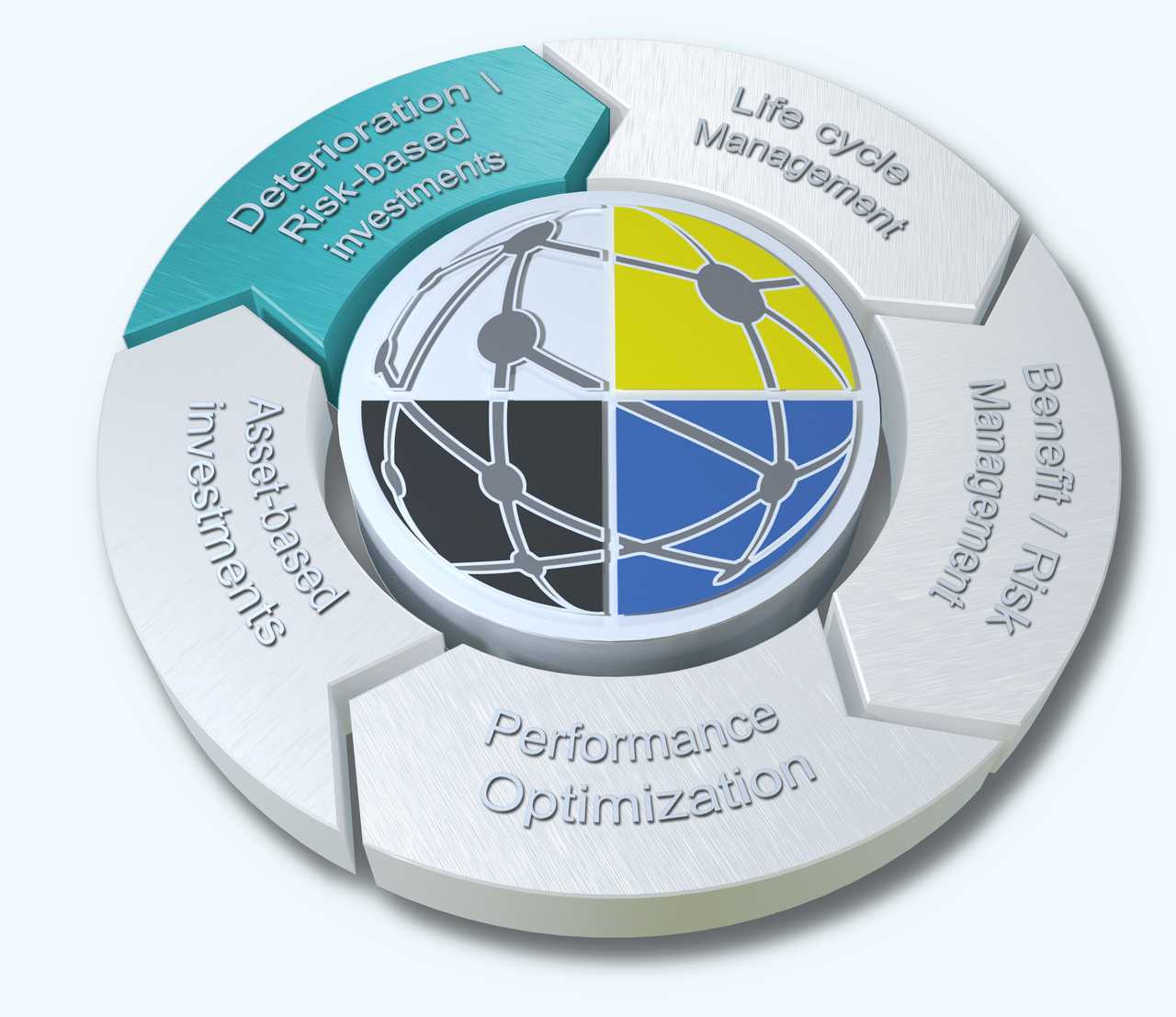
|
Risk-based investment |
What does STATUS do?
STATUS analyses the existing, individual aging behavior of a network. On the basis of this analysis and taking into account the maintenance and rehabilitation decisions of the network operator, STATUS forecasts the change in object-specific condition and fabric deterioration (e.g. for sewer sections and manholes) for the current period (present forecast) and the future. The forecast of the object-specific fabric deterioration until the wear reserve of an object would be used up, enables the determination of the remaining technical useful life of an object. Default risks can thus be identified at an early stage and investment dates can be optimized depending on the structural wear reserve still available. With this knowledge and the strategic plans of the network operator, the consequences of actions on technical and economic parameters can be simulated. However, the quality of a strategy simulation depends to a large extent on whether it is possible to depict the factors (influencing variables) that influence the future development of the network system in reality. For STEIN Infrastructure Management the strategy simulation is therefore always a process that is tailored made to the specific situation of the network operator. On the basis of these strategy simulations, optimized solutions can then be developed to achieve the objectives.
STATUS Process Steps
Data management and plausibility check
Increase of planning security by means of structured data and quality management. The plausibility check includes the following steps:
- statistical evaluation of the basic data,
- formal and logical plausibility check.
Assessment of the basic structure and structural condition
Extended damage models allow for a differentiated condition assessment for structural damage while taking into account quantitative structural limiting conditions. Condition and asset deterioration classes are determined separately for the protection objectives of leak tightness, stability and operational safety. In addition, condition classes and fabric decay classes of the objects in drain and sewer or supply systems are put on a permanent footing based on a comprehensible mathematical model.
Strategic Rehabilitation and Maintenance Management
Based on realistic modeling and a precise forecast of the aging development of individual objects (sections, shafts), the short-, medium- and long-term deterioration are forecasted and thus, the date of failure is determined for each individual object. This information can be used to identify the efficiency of possible strategies as well as to choose the optimum strategy.
Rehabilitation and Maintenance Operations Management
Implementation of the optimum strategy in precise project measures for cleaning, inspection and rehabilitation.
General results of STATUS
STATUS enables the development and optimization of rehabilitation strategies for a cost-efficient achievement of individual objectives of the network operator. This includes:
- optimization and stabilization of financial needs
- optimization and stabilization of wastewater fees/ revenues
- optimization and stabilization of the yearly rehabilitation rate in terms of length / volume
- determination of future rehabilitation and investment needs for use as a planning tool
- determination of future human resources according to rehabilitation needs
- impact assessment of the planned maintenance regarding fees, rehabilitation lengths (including possible side effects to infrastructure nearby such as traffic / water supply) and resulting future financial needs
- improving the information base for external consultants and auditors
- improving communication between technical and financial management.
In detail, the results of this optimization process are based on the information generated below:
- Object-specific development of condition classes per strategy, differentiated into 3 subcategories (tightness, structural stability, operational safety)
- Object-specific development of fabric deterioration classes per strategy, differentiated into 3 subcategories (tightness, structural stability, operation safety)
- Object-specific development of age groups and age distribution per strategy, differentiated into 3 subcategories (tightness, structural stability, operation safety)
- Mean condition development (comparison of all strategies)
- Mean fabric deterioration development (comparison of all strategies)
- Development of average construction year distribution (comparison of all strategies)
- Mean remaining useful life for all objects and individual clusters per strategy
- Object-specific expected values for the remaining useful life produced by each strategy
- Development of fixed assets / net book values per strategy
- Development of net asset value per strategy
- Development of net asset value profit per strategy
- Development of average depreciation periods
- Development of depreciation losses per strategy
- User fees necessary to support each strategy
- Development of maintenance costs per strategy
- Development of maintenance / rehabilitation lengths [km, mi] per strategy.
Monitoring with STATUS Cockpit
Monitoring allows a systematic recording of all processes that have an influence on the condition and fabric deterioration development of the water supply or wastewater disposal network. These recorded processes can be evaluated and compared with optimized target values regarding network and asset development. With this permanent target/actual comparison, management decisions for controlling the network development can be derived in a fact-based manner with regard to target values.
STATUS Cockpit is a web-based app-analysis with an in-depth filter engine that allows an evaluation of the data with regard to their complex, multivariate (multidimensional) character. This is necessary because usually only a small part of the possible correlations among the data is known in advance and thus management decisions are limited to these. However, the goal of data analysis should be to make even the unknown correlations transparent and thus improve the basis for decision-making and strategy development. Cockpit is based on predefined analyses based on the above-mentioned information results of STATUS. All pre-defined analyses can be individually adapted to operator requirements.
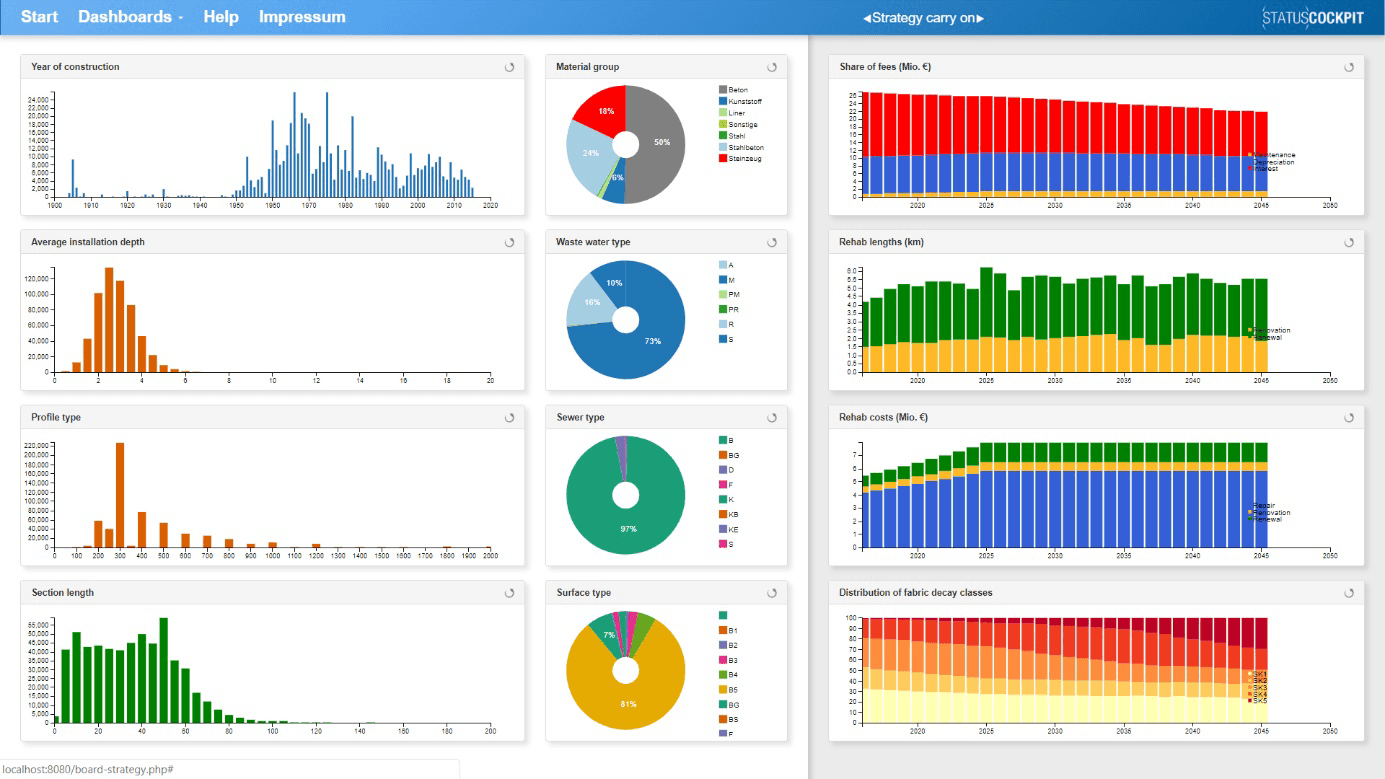
Example presentation of the added value provided by STATUS and Cockpit
